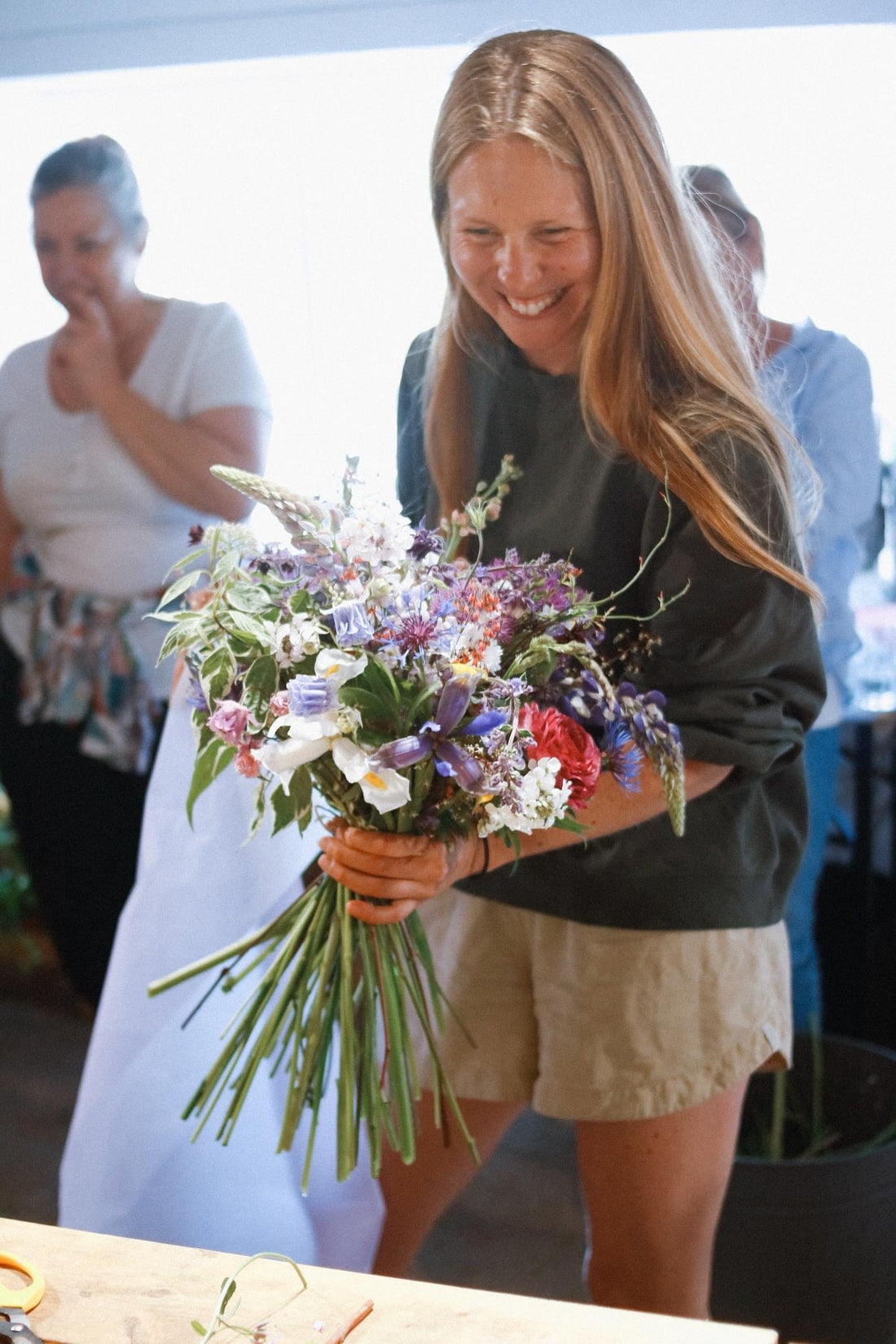Hello everyone. If you’re looking to get married in Yorkshire and you’re navigating the world of wedding flowers I thought it might be helpful to talk about what seasonal British flowers actually means.
Whether you’ve found me through Flowers from the Farm or directly, it’s likely that you’re interested in British flowers, locally grown flowers or wildflower style wedding flowers. Maybe you care about having flowers without the heavy environmental impact or maybe you care about having beautiful, natural style flowers with some character and quirkiness. Either way, I’m glad you’re here and I hope I can help you understand what seasonal means in the context of British wedding flowers.
Because I realised recently that, although we flower farmers know what it means, it might seem a bit obscure to someone without any experience of growing flowers outside in Yorkshire, which is most people. You can be somewhat guided by what you see outside in people’s gardens, but that’s not a totally accurate portrait, as the flowers will vary somewhat between garden and flower farm. But it’s a good starting point.
There is very little in flower over the winter here on my flower farm just outside Leeds, between the first frost date in November sometime until the early spring flowers arrive in March / April. So truly seasonal wedding florals over winter in Yorkshire involve evergreen foliage, a few winter flowering shrubs, seed heads, catkins and berries and then narcissi, hellebores and snowdrops towards the end of winter. However, lots of wedding florists in Yorkshire, including me, will order in British flowers grown down south by larger scale growers during the winter, which means additional flowers such as narcissi, alstromeria and tulips might be available.
The idea of this blog is to let you know what is seasonal to the UK but I also want to make clear that plenty of florists who use British flowers during the growing season will use imports over winter to supplement what is available here. If you’re happy to be truly seasonal with your winter wedding you will absolutely be able to have beautiful natural arrangements, but if you’re set on a specific flower which doesn’t grow in winter in the UK there will be a florist that will get it for you. That just isn’t what I do because I don’t use imported flowers as a rule. That’s just a choice I’ve made for me and my business in the hopes of really showcasing British flowers and what’s available.
It’s not until around mid April with the arrival of the tulips that my garden really begins flowering, but the selection at this time of year is still limited, at least for March and April. My spring wedding flowers could include tulips, one of my absolute favourites, scented narcissi and daffodils, ranunculus and butterfly ranunculus, flowering shrubs such as spirea and lilac, anemones, honesty and sweet rocket, and later in April and into May alliums and irises, lupins and sweet peas and cornflowers and the frilly and airy flowers like chamomile, ammi, orlaya and caraway. The further into the season you get, the more flowers become available. But I’m happy to order in British wholesale in early spring to add more variety to my offering.
Once June comes around some of the more well known flowers arrive, like the peonies, around just briefly, and the roses, which have a longer flowering period. But really now that the season is in full swing you will be spoilt for choice with colour and variety until the end of September, when the garden starts to think about winding down. The heat lovers like dahlias and sunflowers and straw flowers will arrive around July time and the dahlias, along with late season flowers like rudbeckia and chrysanthemums will keep going until the first frost in October.
If you’re getting married in the autumn it will really depend on the weather and when the first frost comes as to what is available. Expect plenty of choice in September, and a more limited but still rich selection in October unless an early frost comes. By November the selection will likely be reduced, and it might be wise to think about using dried flowers or relying heavily on winter foliage as described at the beginning of this blog unless you’re happy to be super flexible with what remains in the flower field.
I really hope that was helpful. Please reach out with any questions and check out my instagram photos to see what is in season in my garden!
Thanks for reading
Sammie x

